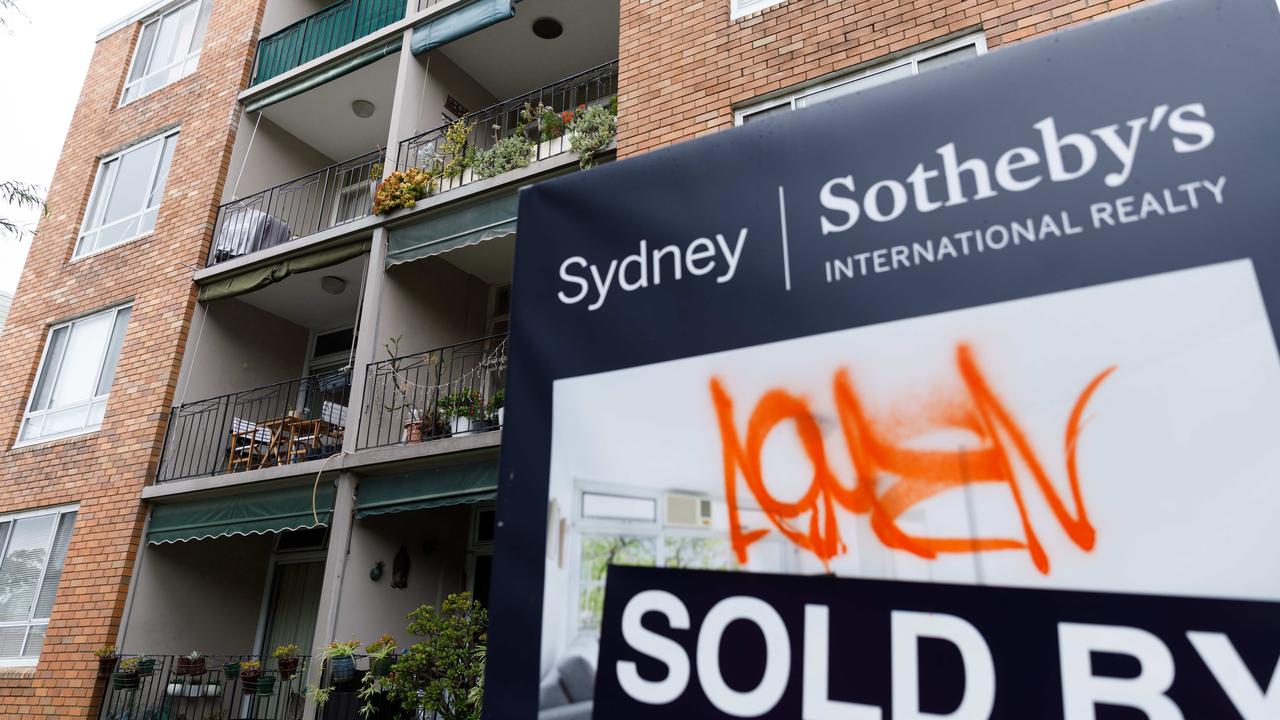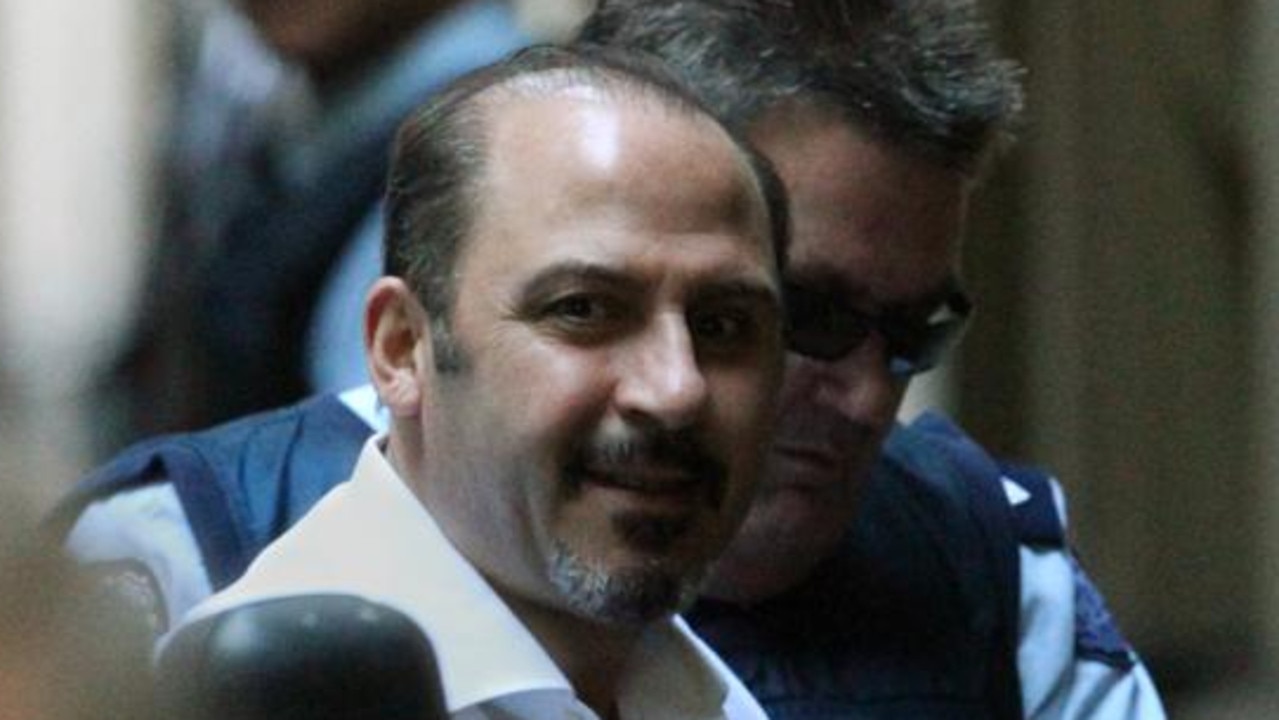Calls for truck safety crackdown following grisly Melbourne livestock truck crash
The moments leading up to the horrific smash involving a cattle truck have been revealed as calls grow for greater management of livestock trucks on city roads.

News
Don't miss out on the headlines from News. Followed categories will be added to My News.
The devastating moments that led to a grisly crash involving dairy cattle in South Yarra have spurred calls for greater management of trucks on Melbourne’s roads.
Officials are calling for the state government to consider better signage and commute routes for trucks to ensure the welfare of livestock making their way through the city.
The calls come after a double-decker truck carrying 75 dairy cows and calves collided with a rail bridge on Alexandra Ave on Tuesday night.

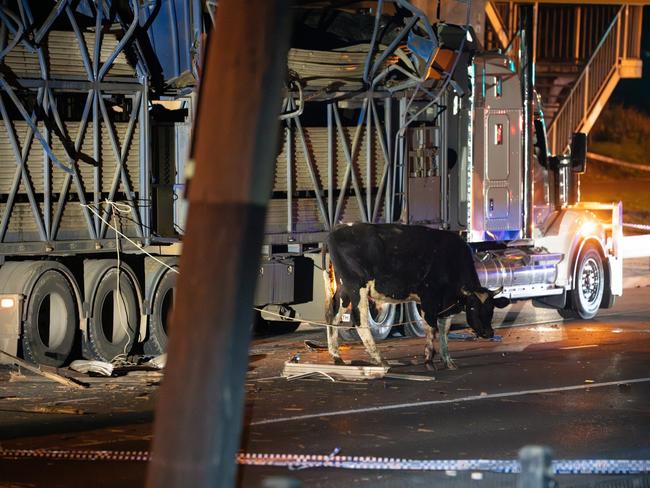
The 4.6m tall Kenworth truck trailer slammed into the 4m high Cremorne railway bridge between Punt Road and Chapel St, wedging the load and cattle underneath.
Onlookers watched the harrowing scene as cows tried to escape the crushed carriages, “wanting to free themselves but just hurting themselves” and mooing in pain.
One cow was seen dangling from the top-deck of the truck before jumping onto the road, appearing to break his legs upon impact.
“The cows were in pain you could hear it, we saw one with blood coming out his mouth,” onlooker Joel Biju said.

Cows that escaped the top-deck turmoil appeared traumatised by the close-range tranquilliser guns, the growing crowd and flashing police lights.
Approximately 22 cows were killed in the incident, either upon impact or resulting humane euthanasia. The remaining cattle were reassessed by Agriculture Victoria at a holding facility on Wednesday.
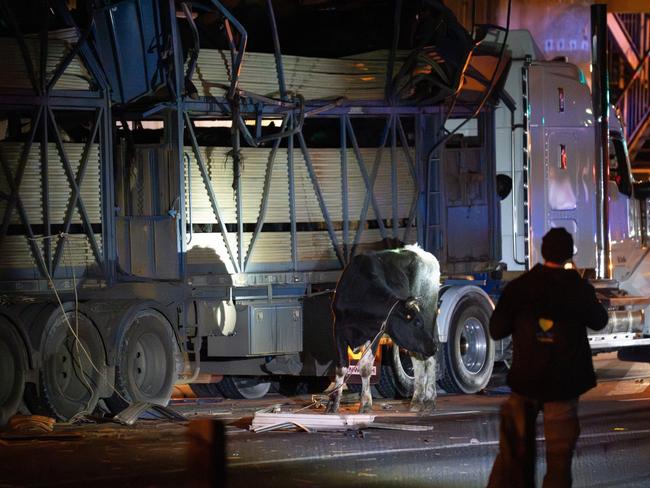
What led to the incident?
The “experienced” truck driver, understood to have been travelling from New South Wales and unfamiliar with the roads, is believed to have “missed his turn off” on his way toward the Westgate Freeway.
Being 4.6m, the cattle truck was not permitted to travel through the CityLink tunnels.
So rather than travelling via the City Link and crossing the Swan Street bridge to access City Road, it’s understood that the driver didn’t take his exit, resulting in “panic”.
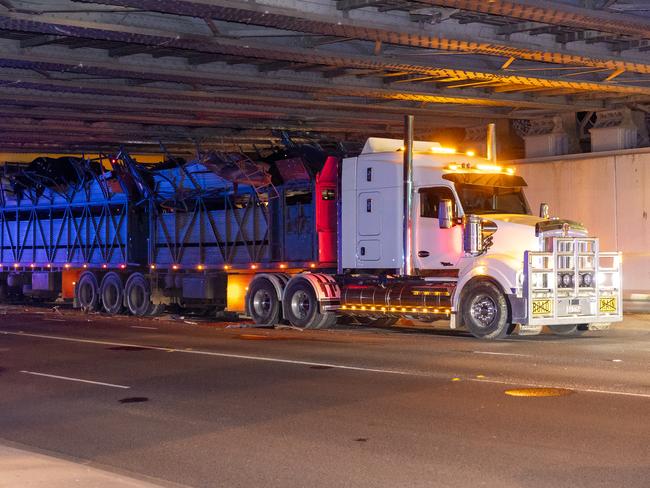
Peter Anderson of the Victorian Transport Association said while it was “easy to blame the driver” for the horrific incident, he still had sympathy for him under what’s “roughly” understood of the situation.
“This poor fella, I feel sorry for him,” he said.
“The driver was trying to do the right thing, I can see it now.
“He missed the turn off that would have put him back onto the freeway.
“He would have been in a panic trying to find out how to get off the road he’s not meant to be on, and he’s driven straight into this bridge because he’s probably using a GPS.
“If he stops he blocks the whole road, he can’t do a U-turn in a double articulator truck, and he’s probably in panic mode.”
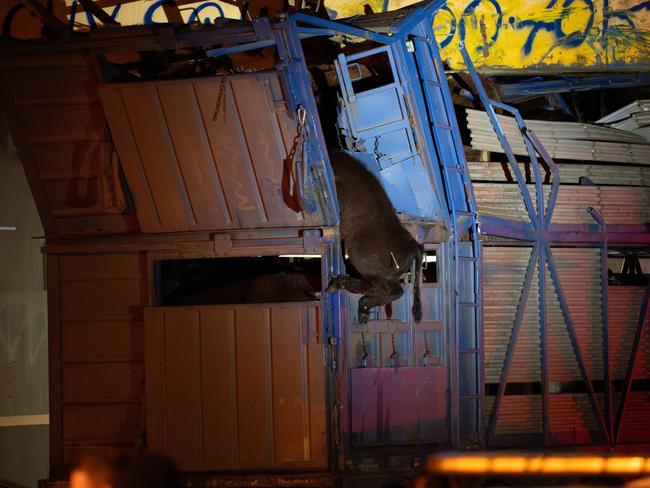
The Livestock and Rural Transport Association of Victoria thanked the driver, emergency services and vets for their quick response.
“While very distressing, these types of incidents are rare.
“It’s expected a lack of signage on heavy vehicle routes through inner city Melbourne will be part of the investigation by police and road managers.
“LRTAV are working with government, regulators, and across industry to prioritise animal welfare and the safety of all road users,” LRTAV Chief Operating Officer Alina Hawkins said.
‘Least that they deserve is a chance to live’
Animals rights campaigners from the Farm Transport Project are calling for the approximately 50 surviving cows to be freed from their presumed slaughter.
“The level of pain and fear these cows would have experienced during this crash is unimaginable, and must only have increased as they remained trapped in the wreckage as other cows were shot with bolt guns around them,” spokesman Chris Delforce said.
“The least that they deserve is to be given a chance to live out the rest of their lives in peace, rather than being sent to the slaughterhouse.
“These cows deserve sanctuary, not slaughter.”
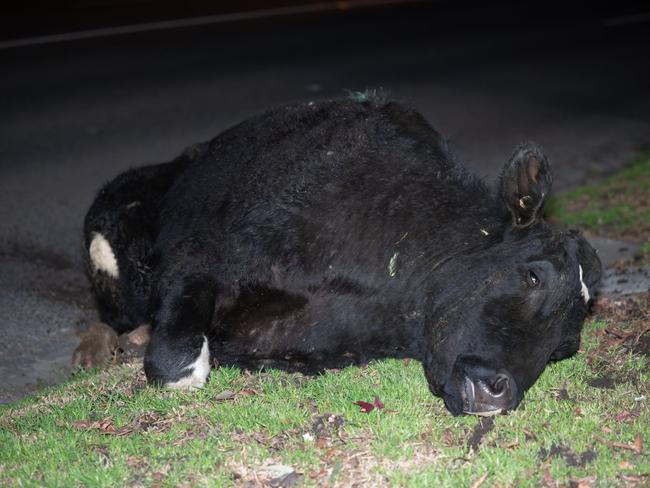
Mr Delforce said many onlookers offered to transport and house the surviving cows on Tuesday night, but police did not pass on their details to the dairy cow owners.
Safer travel for trucks and livestock
Mr Anderson said the incident highlighted the dire need for greater management of trucks commuting through Melbourne.
He said the Victorian Transport Association had been advocating for more signage as to where trucks should be, including pictures of trucks on main road signage to point drivers in the correct direction.
“We’d like to see some of those VicRoads signs with pictures of trucks, so everyone knows that’s where trucks need to go,” he said.
A Department of Transport and Planning spokesperson said signs warning of the four-metre clearance are clearly visible to drivers approaching the Cremorne Railway Bridge as well as on either side of the bridge itself.
“We urge truck drivers to be aware of their vehicle heights and pay attention to bridge height restriction signage when they are travelling to their destination,” the spokesperson said.
City of Melbourne Lord Mayor Nick Reece called the horrific collision an “unfortunate incident”.
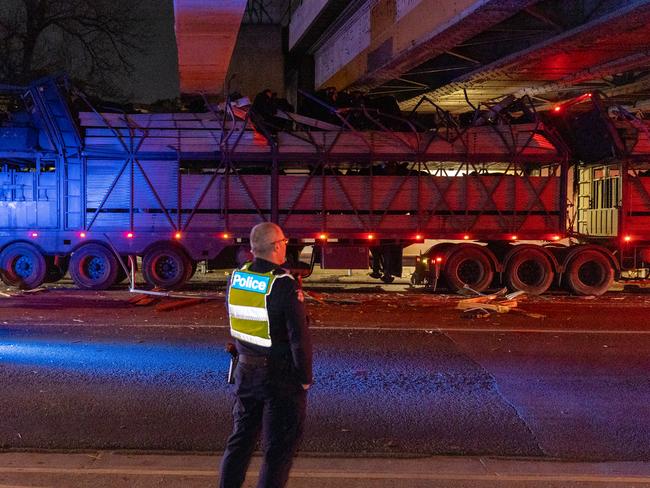
Six years ago he called for livestock trucks to be banned from City Road to minimise “the smell, the noise, the manure and effluent on the road”.
“I reiterate my strong concerns made in 2018, that livestock trucks on local roads – like City Road in Southbank – are a safety hazard for all road users,” he said following the South Yarra collision.
But Mr Anderson said banning trucks from major arterial roads was not the answer.
“These trucks have to go somewhere. You can’t just say ‘no trucks’,” he said.
Trucks could travel through the CityLink tunnels for easier transit, he said, if further regulations like panelling on the roofing of agricultural trucks was considered.
“They don’t like the cattle trucks going through the tunnel because the roof is so close. The tunnel is 4.88m high – they can fit, but only just,” he said.
“If the cows jump up when they’re in the tunnel, because the roof’s close, the car behind ends up with a cow’s head on the bonnet.”

